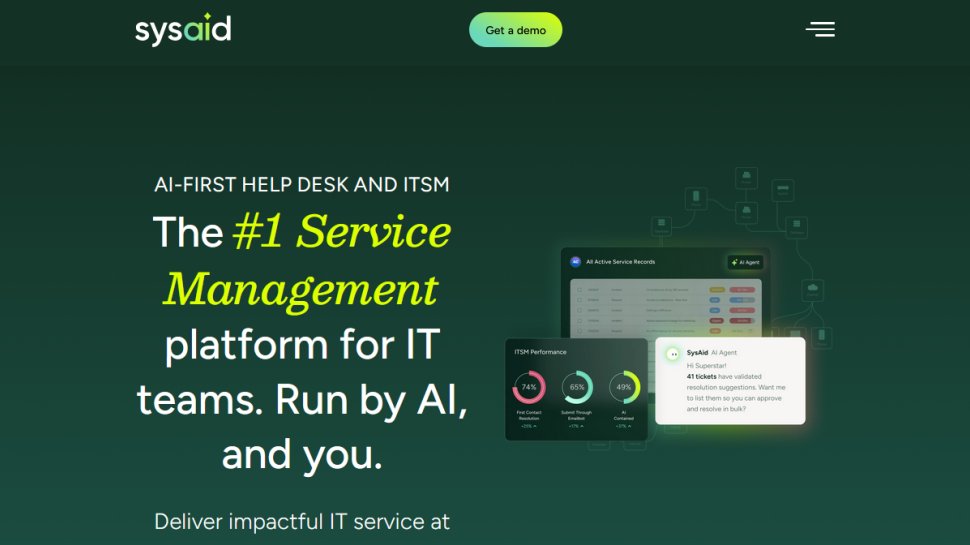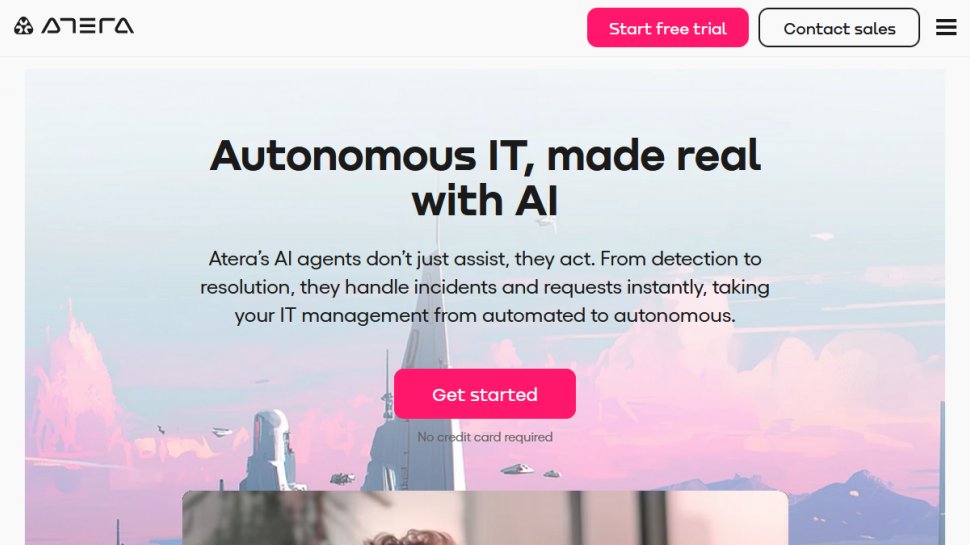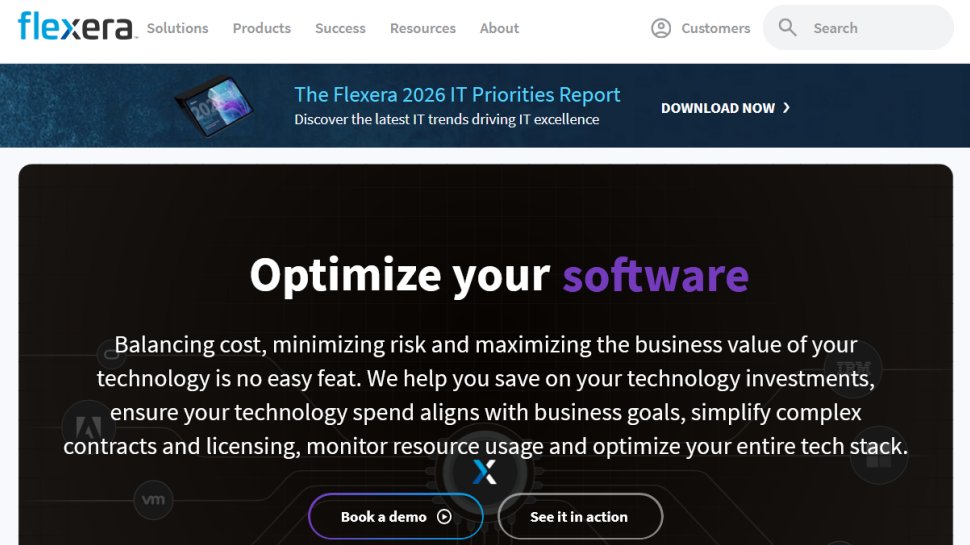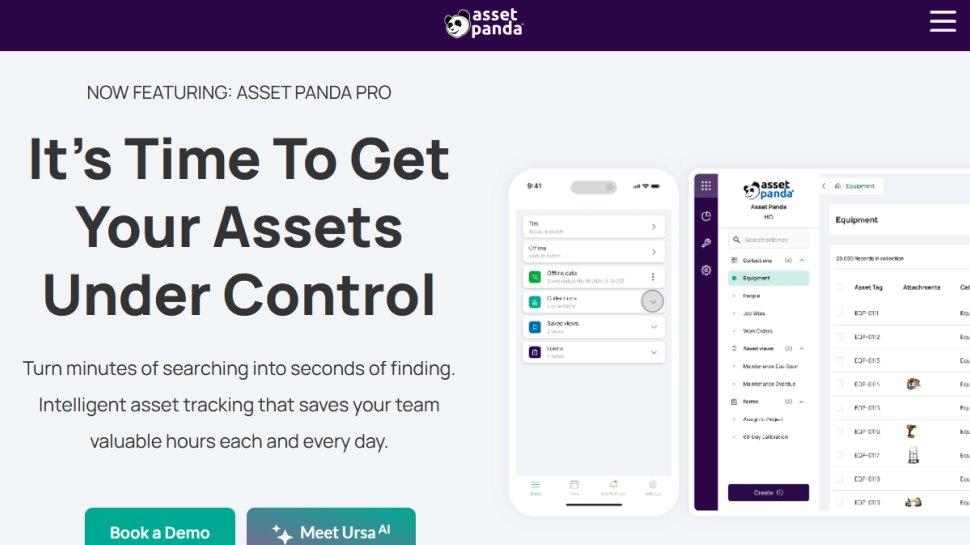Best software asset management (SAM) tool of 2025
Better organize your software licenses and spend

We list the best software asset management (SAM) tools, to make it simple and easy to better organize and control your software licenses and your spend on them.
Software is a vital part of every organization. No business can exist in the 21st century without digitizing some aspects of its operations. Every business must use several software tools to manage its processes, and managing these tools can be difficult, especially for large companies. That’s why we have software asset management tools to make it easier.
Software asset management deals with managing and optimizing the acquisition, deployment, and maintenance of software tools in an organization. What software do we need for this specific task? How much do we pay for it? How often should we renew their subscription?
These are important questions that employees ask frequently. They may seem trivial but aren’t. In a large organization, it’s easy to forget about maintaining and renewing software subscriptions, which can cause major issues. A software asset management tool prevents this from happening.
We tested different software asset management tools to identify the best ones. We narrowed our list based on important factors including features, pricing, customer support, performance, etc. Each tool has its pros and cons, but they are, overall, the best you can use to manage and optimize software usage.
Also check out the best maintenance management software.
The best software asset management tool of 2025 in full:
Why you can trust TechRadar
Best software asset management tool for affordability
1. ManageEngine AssetExplorer
Reasons to buy
Reasons to avoid
ManageEngine is well-known for offering robust features on a relatively tight budget.
You can use ManageEngine’s AssetExplorer to discover, monitor, and track all software assets connected to your organization from a single dashboard. This tool gives you a bird’s eye view of your software licenses and ensures you renew them on time. It tracks and monitors every software and hardware resource connected to your enterprise network.
You can use AssetExplorer to manage your software purchase orders. You can enforce purchase policies across your organization and use the tool to identify areas where you can cut down costs.
ManageEngineoffers a free but limited version of AssetExplorer; it allows you to manage a maximum of 25 assets. Pricing for the premium plan depends on the number of assets you want to manage. The licensing fee is one-time, which is cost-effective.
Best software asset management tool for automation
2. SysAid
Reasons to buy
Reasons to avoid
SysAid is a popular IT service management platform. It includes a built-in software asset management tool that’s suitable for businesses of all sizes.
SysAid enables you to manage all your software assets from a single dashboard. You can easily discover all the software products connected to your enterprise network and get details when needed. You can monitor all licenses from one dashboard to ensure that they’re always renewed and maintained.
SysAid allows you to control devices connected to your network remotely. For example, if a staff is having issues with their software, you can take over their PC to resolve the issues. You can also deploy patches to individual or multiple computers remotely. One good thing about SysAid is that it allows you to automate many IT tasks, e.g., operating system updates.
With SysAid, you can proactively monitor every software tool connected to your network in real-time. You can generate reports to present to organizational stakeholders.
Pricing for this platform depends on your custom IT setup, so you’ll have to contact the sales team for a quote.
Best software asset management tool for enterprises
3. Atera
Reasons to buy
Reasons to avoid
Atera is a well-known remote monitoring and management (RMM) platform. It offers features that enables enterprises to manage their software usage meticulously.
You can use Atera’s Network Discovery tool to get a comprehensive view of all software services connected to your enterprise network. You can monitor all the licenses and ensure that they’re renewed on time.
This platform enables you to create detailed documentation about all software tools that your organization uses; you can access professional templates to do this. The documentation cuts down on internal IT support time, as staff can easily consult this documentation if they have issues with any software.
This platform offers advanced reporting and analytics. You can generate detailed reports about your software inventory to identify any potential issues and fix them. You can schedule these reports to be generated automatically at specific intervals.
Pricing for this tool costs between $149 and $199 monthly per IT technician. You can also contact Atera’s sales team to arrange a custom enterprise plan if your organization is very large. There’s a 30-day free trial period to test the features before making your final decision.
Best software asset management tool for ease of use
4. Flexera
Reasons to buy
Reasons to avoid
Flexera is an advanced IT management platform. It’s not as popular as other competitors on this list but is nonetheless a very good tool. The platform gives you a detailed view of your software usage and allows you to optimize costs.
This platform allows you to easily discover every software tool connected to your organization's network. It compiles raw data from all devices connected to your network and delivers it to you in a central hub. You can easily monitor all your software licensing and ensure they’re always renewed.
Flexera tracks software usage at all times and gives you detailed reports. You can generate the reports automatically when preparing for audits. This platform provides recommendations to optimize costs; for instance, you can easily discover which installations you paid for but have not used or redundant applications that you need to purge from your IT infrastructure.
Flexera has an intuitive interface and is very customizable. However, we observed customer complaints about the platform’s performance slowing down when working with a large number of records.
Best software asset management tool for support
5. Asset Panda
Reasons to buy
Reasons to avoid
Asset Panda is a tool designed primarily for asset management. It includes an IT asset management module that makes it easy to keep track of all your software resources.
Asset Panda compiles all your organization's software data into a central knowledge base that any staff can access. Of course, there's auto-discovery, meaning you can easily discover every software resource connected to your organizational network.
With this tool, you can easily identify any software tools that you don't need and eliminate them. You can track software licensing accurately and get automated alerts once the renewal date for a specific tool is near.
For security reasons, you can create custom user roles to control who has access to what data. For instance, you can give IT staff a full view and other staff a limited view.
A good thing about Asset Panda is that it has a mobile app. Hence, you can easily track and manage your software on the go. The app is available on the App Store for iOS users and Play Store for Android users.
Pricing for this platform depends on the features you select, so you’ll get a personal quote.
We've also featured the best asset management software.
Best software asset management tool FAQs
Essential features of a software asset management tool
Software discovery
Your platform should keep a centralized database of all the software resources that your organization uses. In the old times, companies used spreadsheets to track this, a process that was prone to mistakes. Software asset management platforms have made it easier by automatically detecting all the software registered on a company’s network.
Access control
You should be able to control who has access to what software or not. Business software often contains very sensitive information, which makes security paramount. Hence, your platform should let you decide who can access software with such sensitive information.
Automated license tracking
Using many software assets means that you must keep accurate track of license expiry and renewal dates. Doing this manually is prone to mistakes that can disrupt your operations if a subscription is allowed to lapse. However, asset management tools automate the license tracking process and always alert you when the renewal date is near.
Reporting
You should be able to generate automatic, detailed reports about your organization’s software use. These reports should look professional and presentable at a glance. They should also contain accurate information.
How to choose a software asset management tool
Cost
Cost is the first thing to consider when choosing any platform. You should pick a software asset management tool that you can afford in the long term. Pricing usually depends on your organization’s size and technical infrastructure. Ensure you get a good estimate of what you’ll pay beforehand and read the fine print to see if there are any hidden costs. Check if there’s a free trial to test the features before paying.
Ease of use and setup
Setting up a software asset management tool to integrate with your existing technical infrastructure is often difficult. Hence, you should find a platform that’s as easy to set up as possible. The platform should also have an intuitive interface that’s easy to navigate and understand. Any platform that’s difficult to set up and use can frustrate your staff and cause costly mistakes.
Customer support
Software glitches and problems can occur at any time, and you’ll likely need external help to solve them. Thus, you should go for a software asset management tool that has a good reputation regarding customer support. You should be able to connect with a knowledgeable human support representative at any time. You should also have access to extra support resources such as FAQs, user guides, and detailed documentation.
How we tested the best software asset management tool
We test by evaluating numerous factors. To start with, we look at the feature set, the range of tools available, and what size of businesses this would be ideal for. We consider how easy the setup is, the simplicity of the interface, and whether there's sufficient documentation and tutorials for users to utilize necessary options optimally.
We assess how well the service integrates with other relevant apps, and check the overall scalability of the service. We also analyze whether there are collaboration features for multiple users, and lastly, we judge the quality of the customer service and the different pricing plans available.
Read more on how we test, rate, and review products on TechRadar.
Get in touch
- Want to find out about commercial or marketing opportunities? Click here
- Out of date info, errors, complaints or broken links? Give us a nudge
- Got a suggestion for a product or service provider? Message us directly
- You've reached the end of the page. Jump back up to the top ^
Sign up to the TechRadar Pro newsletter to get all the top news, opinion, features and guidance your business needs to succeed!
Stefan has always been a lover of tech. He graduated with an MSc in geological engineering but soon discovered he had a knack for writing instead. So he decided to combine his newfound and life-long passions to become a technology writer. As a freelance content writer, Stefan can break down complex technological topics, making them easily digestible for the lay audience.





